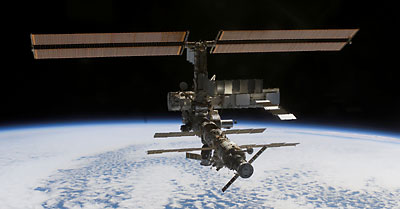Can NASA go back to the Moon, or anywhere else?by Taylor Dinerman
|
| Many of NASA’s worst problems can be laid at the feet of those in the Nixon and Clinton administrations who were unwilling to cancel human spaceflight outright but were equally unwilling to put a coherent program together. |
Even going beyond the CAIB report, one must begin to question all of the bureaucratic impedimenta that a government-run space exploration program must carry with it when it tries to venture off the surface of the Earth. It is difficult to simultaneously convince the US House and Senate that NASA needs more money and more freedom from normal regulations while it has so far failed even to convince the Congress that it has a reasonable plan to replace the shuttle and to begin serious human exploration beyond earth orbit.
Many of NASA’s worst problems can be laid at the feet of those in the Nixon and Clinton administrations who were unwilling to cancel human spaceflight outright but were equally unwilling to spend the time, money, or mental effort needed to put a coherent program together. In the Nixon administration, they ordered the shuttle developed on a shoestring budget. Most of the system’s problems can be traced back to its having been starved while still in the womb.
For the ISS, its lack of usefulness as a base for lunar exploration is due to the fact that it is in the wrong orbit. In order to make the station accessible from both Cape Canaveral and Baikonur, it is in a skewed orbit, suitable for doing useful earth observation but not for much else. The Clinton administration saw it as a symbol of US-Russian friendship and for keeping the large aerospace contractors happy, but that was about it.
Luckily, a set of circumstances has developed that might allow the ISS to be moved into an equatorial orbit, thus allowing it to be used as the departure point for manned lunar missions. First, the European and Russians have agreed to build a Soyuz launch pad in Kourou that will allow them to launch reach the ISS if it were in such an orbit. Second, the technology to move the ISS using an electromagnetic tether is within reach. Third, the US Congress is interested in finding a way to have the US human spaceflight program actually go somewhere, instead of simply going around in circles.
Instead of putting together yet another commission, as Senator Hollings recommends, the President could simply say that we are going to find a way to move the ISS into an orbit from which it can be used to launch missions to the moon. It might take more than three or four years to begin such a move, but by then the new pad in Kourou would be ready and the station itself could begin to be configured as a base for such operations. Also, NASA should come up with either a credible way to get into and out of low earth orbit, frequently and safely, or a way to buy the passenger service from some US entity (commercial or otherwise) that will.
| By using the ISS as a base, and perhaps also creatively using the existing shuttle infrastructure, the President and NASA can take a meaningful step into interplanetary space. |
In 1989, on the 20th anniversary of the Apollo 11 moon landing, President George H.W. Bush proposed to go back to the Moon and then to Mars. After a short study, NASA presented both him and the Congress with a price tag of more than 450 billion dollars. The sticker shock alone, leaving aside any questions of technological capacity, killed the idea. Since then, the US has spent about 100 billion dollars on the shuttle and the ISS, and we are only a tiny bit closer to those objectives than we were fourteen years ago.
By using the ISS as a base, and perhaps also creatively using the existing shuttle infrastructure, the President and NASA can take a meaningful step into interplanetary space. Only a step-by-step process, with clearly defined milestones with the ultimate goal of a permanent human settlement on Mars, will satisfy America’s need for a visionary space program and an affordable way to accomplish it.
The alternatives would represent years of more wasted or nearly wasted effort and increasingly bitter political arguments. There is a embryonic consensus building in the Congress that the US human space program needs an objective. To start a lunar and Martian program from nothing, as some have proposed, would be to waste the huge sums already invested in the Shuttle and the ISS. Making ISS the base from which lunar exploration can depart, and changing the way we use the shuttle’s infrastructure, can be one way to move forward without breaking the bank.
Eventually, the shuttle system will have to be replaced, but the current NASA plan, based on the Integrated Space Transportation Plan of November 2002, is being firmly rejected by both houses of Congress. The space agency had better rethink its program or it will be in even deeper trouble than it is now.
